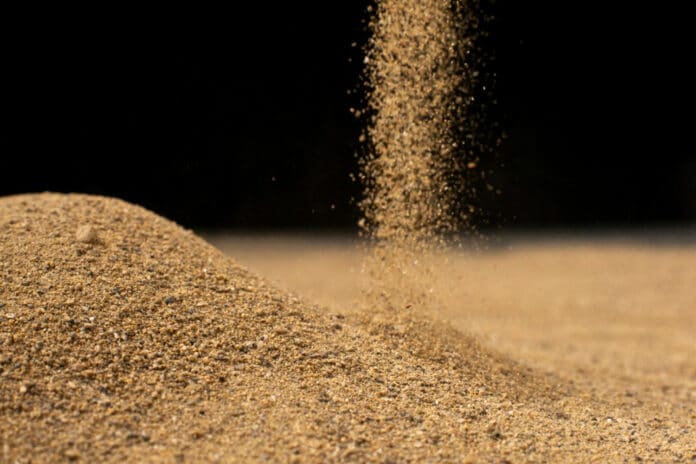Only the grains near the surface of the sand move when it is poured into a container. Through multi-body interactions, the collective motion caused by the translational and rotational energy of the grains in a thin flowing layer is quickly lost as friction. As an alternative, think about what will happen to a bed of particles if each one is given a torque.
Lehigh University scientists demonstrate an experimental system where torque is applied at the constituent level through a rotating magnetic field in a dense bed of microrollers. They found that sand can flow uphill.
They also captured and released a video showing what happens when torque and an attractive force are applied to each grain—the grains flow uphill, up walls, and up and down stairs.
Scientists used equations describing the flow of granular materials to conclusively show that these particles were moving like a granular material, except they were flowing uphill.
Scientists noted, “The highly unusual discovery could unlock many more lines of inquiry that could lead to a vast range of applications, from healthcare to material transport and agriculture.”
While conducting studies on microencapsulation, scientists accidentally captured the movement. The grains started to pile uphill as he spun a magnet beneath a vial of microrollers, which are iron oxide-coated polymer particles.
Scientists started by studying the reaction of the material under different conditions. The microrollers flowed downward when they were poured without being magnetized first. However, when they used the magnets to provide torque, each particle started to rotate, forming brief doublets that swiftly dispersed.
The outcome is cohesion, which generates a negative angle of repose due to a negative coefficient of friction.
James Gilchrist, the Ruth H. and Sam Madrid Professor of Chemical and Biomolecular Engineering in Lehigh’s P.C. Rossin College of Engineering and Applied Science, said, “Until now, no one would have used these terms. They didn’t exist. But to understand how these grains flow uphill, we calculated the stresses that cause them to move in that direction.”
“If you have a negative angle of repose, then you must have the cohesion to give a negative coefficient of friction. These granular flow equations were never derived from considering these things, but after calculating it, what came out is an apparent coefficient of friction that is negative.”
The cohesiveness rises with increasing magnetic force, giving the grains greater traction and enabling them to move more quickly. A mound of sand particles may work together to accomplish paradoxical things, like flow up walls and climb stairs, thanks to the aggregate motion of all those grains and their capacity to attach. The team is constructing tiny stairs with a laser cutter and recording the material as it ascends on one side and descends on the other.
Gilchrist said, “A single microroller couldn’t overcome the height of each step. But working together, they can.”
“This first paper just focuses on how the material flows uphill, but our next several papers will look at applications, and part of that exploration is answering the question, can these microrollers climb obstacles? And the answer is yes.”
Wide-ranging applications might be possible. Objects could be mixed, separated into different materials, or moved using microrollers. And because these researchers have discovered a new way to think about how the particles essentially swarm and work collectively, future uses could be in microrobotics, which could have healthcare applications. A recent work by Gilchrist examined its use of soil as a method of fertilizer delivery through a porous medium.
Gilchrist said, “We’re studying these particles to death, experimenting with different rotation rates and different amounts of magnetic force to understand their collective motion better. I know the titles of the next 14 papers we’re going to publish.”
Journal Reference:
- Wilson-Whitford, S.R., Gao, J., Roffin, M.C. et al. Microrollers flow uphill as granular media. Nat Commun 14, 5829 (2023). DOI: 10.1038/s41467-023-41327-1
